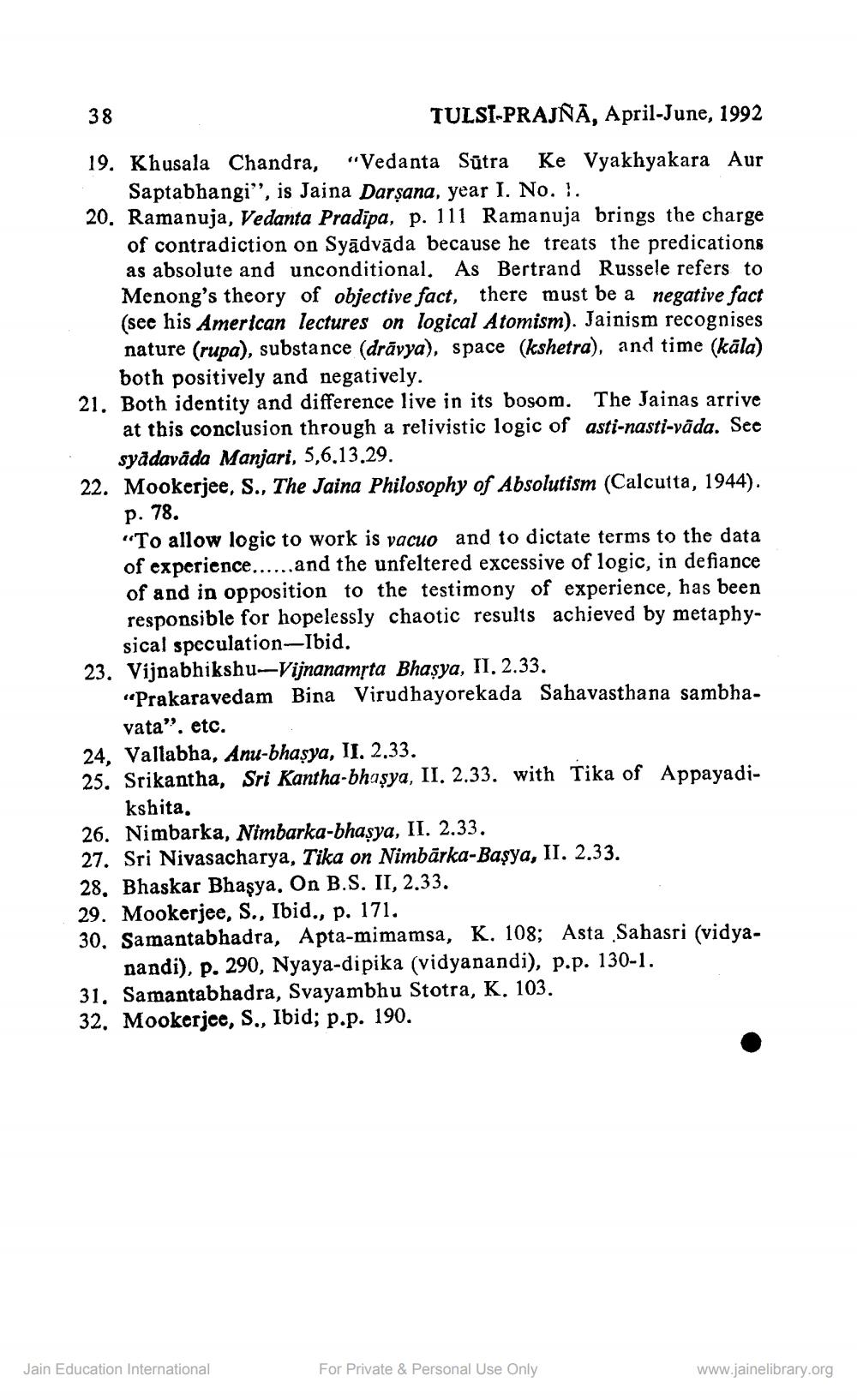________________
38
TULSI-PRAJNĀ, April-June, 1992 19. Khusala Chandra, “Vedanta Sūtra Ke Vyakhyakara Aur
Saptabhangi”, is Jaina Darşana, year I. No. !. 20. Ramanuja, Vedanta Pradipa, p. 111 Ramanuja brings the charge
of contradiction on Syādvāda because he treats the predications as absolute and unconditional. As Bertrand Russele refers to Menong's theory of objective fact, there must be a negative fact (see his American lectures on logical Atomism). Jainism recognises nature (rupa), substance (drāvya), space (kshetra), and time (kāla)
both positively and negatively. 21. Both identity and difference live in its bosom. The Jainas arrive
at this conclusion through a relivistic logic of asti-nasti-vāda. See
syådavåda Manjari, 5,6.13.29. 22. Mookerjee, S., The Jaina Philosophy of Absolutism (Calcutta, 1944).
p. 78.
"To allow logic to work is vacuo and to dictate terms to the data of experience......and the unfeltered excessive of logic, in defiance of and in opposition to the testimony of experience, has been responsible for hopelessly chaotic results achieved by metaphy
sical speculation-Ibid. 23. Vijnabhikshu--Vijnanamsta Bhasya, II. 2.33.
"Prakaravedam Bina Virudhayorekada Sahavasthana sambha
vata”. etc. 24, Vallabha, Anu-bhaşya, II. 2.33. 25. Srikantha, Sri Kantha-bhașya, II. 2.33. with Tika of Appayadi
kshita. 26. Nimbarka, Nimbarka-bhasya, II. 2.33. 27. Sri Nivasacharya, Tika on Nimbārka-Başya, II. 2.33. 28. Bhaskar Bhasya. On B.S. II, 2.33. 29. Mookerjee, S., Ibid., p. 171. 30. Samantabhadra, Apta-mimamsa, K. 108; Asta Sahasri (vidya
nandi), p. 290, Nyaya-dipika (vidyanandi), p.p. 130-1. 31. Samantabhadra, Svayambhu Stotra, K. 103. 32. Mookerjee, S., Ibid; p.p. 190.
Jain Education International
For Private & Personal Use Only
www.jainelibrary.org




